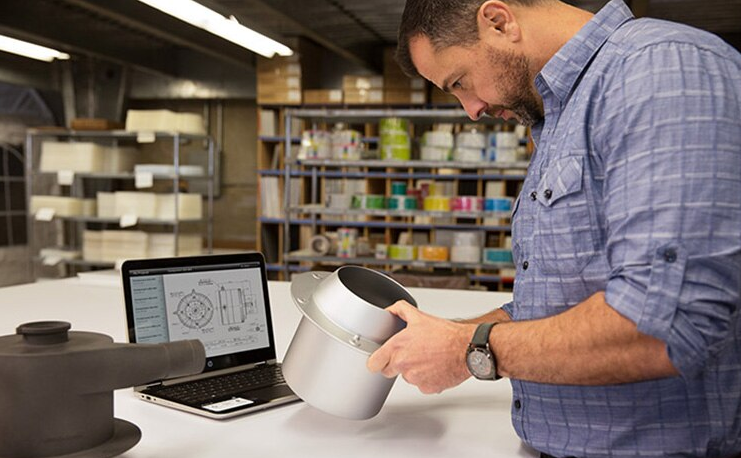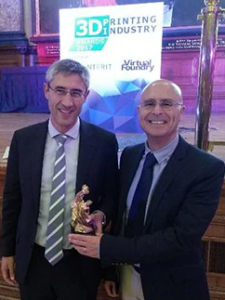There are four reasons why HP Multi Jet Fusion technology is better than the competition.

HP won the coveted Innovation of the Year award at the first annual 3D Printing Industry Awards on 20 May. HP was able to win despite strong competition due to our HP Multi Jet Fusion technology. Multi Jet Fusion technology is the unique and innovative platform that makes our 3D printing system so powerful.
The competition was sponsored by 3DPI, one of the most influential publications in the 3D printing industry. HP emerged as a finalist from more than 800 nominations. 200,000 votes were cast around the world, and we won.
“This award strongly affirms the amazing progress we have made this year,” said Ramon Pastor, vice president and general manager for Multi Jet Fusion. “To be recognized by our industry peers is a tremendous honor. The award is a result of the vision, ingenuity, and hard work from our entire HP 3D Printing team to make it happen.”
Winning Innovation of the Year is a perfect opportunity to closely examine Multi Jet Fusion technology. There are four key differentiators.
1. Precision
Our process delivers parts with unprecedented control. This control extends to the level of the voxel. Do you know what a voxel is? It can be compared to a pixel that exists in three dimensions. Instead of squares on paper, HP Jet Fusion 3D printers produce tiny square boxes. Millions upon millions of voxels produce a single part. In that process, HP fusing and detailing agents work with Multi Jet Fusion technology and materials to deliver extremely fine details and accuracy in every dimension.
“HP is leading the evolution of 3D printing from prototyping to production. The combination of HP’s open platform plus voxel-level control will help transform this multi-trillion dollar market.”
– Bill Huseby, president and CEO, SIGMADESIGN
2. Open
The HP Open Platform for materials allows materials companies to create, iterate, and invent new recipes for 3D printing powders. These printing powders that will be optimized for our solutions. This approach will enable innovative new application use cases. It will reduce the costs that are currently preventing the industry from reaching its full potential.
“The Open Platform gives BASF an opportunity to collaborate with customers. Alongside HP, BASF will accelerate not only the material market, but also 3D printing adoption within manufacturing.”
– Kara Noack, head of 3D printing North America, BASF

3. Strength
Multi Jet Fusion technology makes it possible to print light but incredibly strong parts. We printed a chain link that weighs just a quarter of a pound, but it can lift up to 10,000 pounds. See the amazing video. This strength is important because it means 3D printed parts can now be used for demanding applications where failure is unacceptable, such as in aircraft or in a medical device.
“HP is offering a genuinely revolutionary new type of 3D printing. New 3D printing market technologies create much excitement but HP’s Multi Jet Fusion technology is special.”
– Joe Kempton, analyst for market research firm Canalys
4. Speed
With Multi Jet Fusion technology, 3D printing is fast. Our printers can achieve speeds up to 10 times faster than other 3D printing solutions. Speed is essential if 3D printing is to replace traditional manufacturing methods. Because Jet Fusion 3D printers can produce parts so quickly, manufacturers can choose our solution rather than traditional injection molding for high volume production runs. That is extremely significant for 3D printing. It is helping to fuel the fourth industrial revolution.
“We had machines that could print adequate nylon parts. But the parts could not be printed fast enough and inexpensively enough for end users. For prototypes, this was adequate. But if the goal is production runs, the speed is not adequate. With HP Multi Jet Fusion, we can now make 2,000 quality parts in a day.”
– Corey Weber, CEO, Forecast3D
